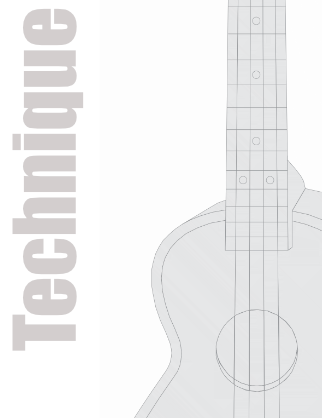
This lesson covers the common terms used for identifying the fingers used. And, presents a series of single string exercises for exploring and developing the techniques needed for this style.

Exploring fingerstyle on ukulele. This lesson covers the common terms used for identifing the fingers used. And, presents a series of single and multi-string exercises for exploring and developing the techniques needed for this style.

All possible one, two, three, and four string combinations on ukulele. Used for single note technique, fingerpicking, harmonic intervals, and chord string families.
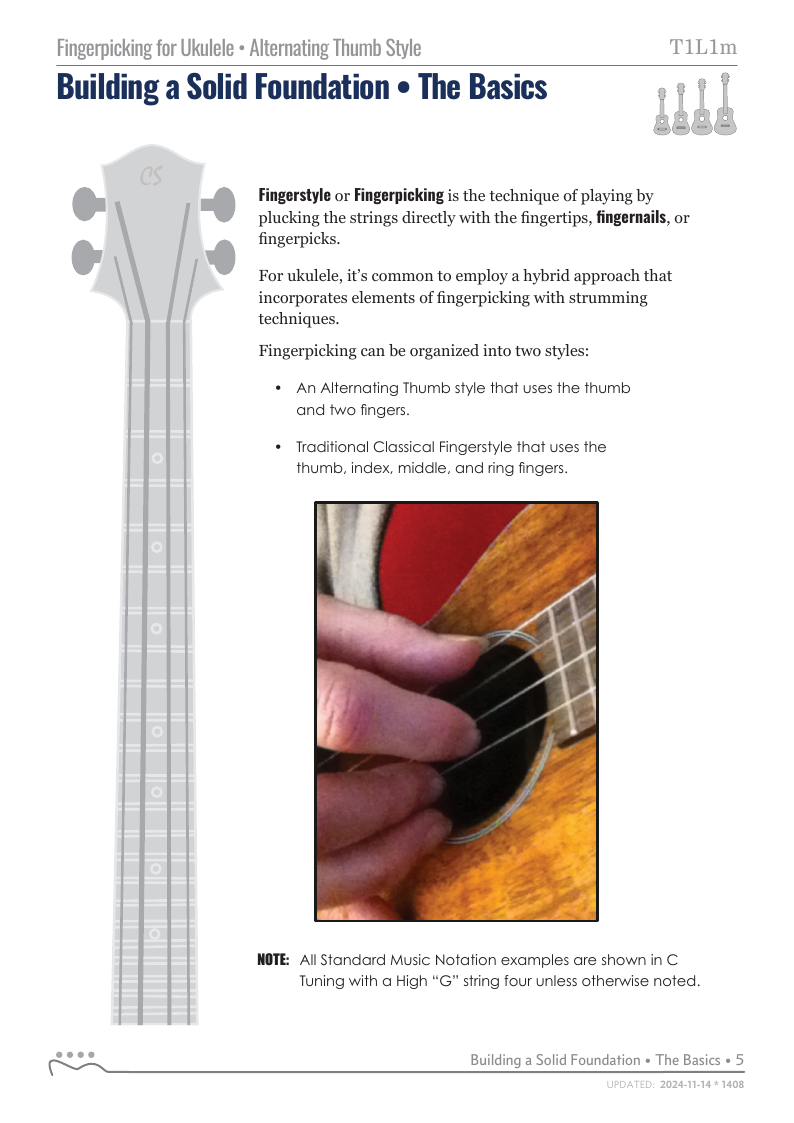
As the subtitle of this Fingerpicking Basics lesson for Ukulele implies, this lesson's focus is on the alternating thumb part of the style. Commonly called Travis Picking on guitar and Scrugg's Style for banjo. For guitar it’s an alternating bass note style with the thumb playing the lower, bass notes.
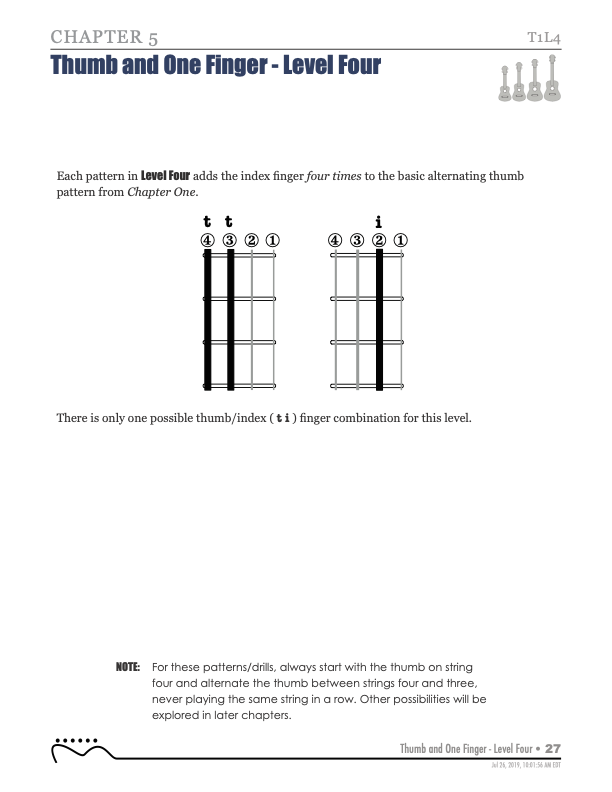
All the previous lessons in the "Fingerpicking for Ukulele, Alternating Thumb Style Series" where melodic, single notes only. This lesson introduces The *Pinch, where any one of the thumb/index finger or thumb/middle finger combinations can be played together - harmonically.
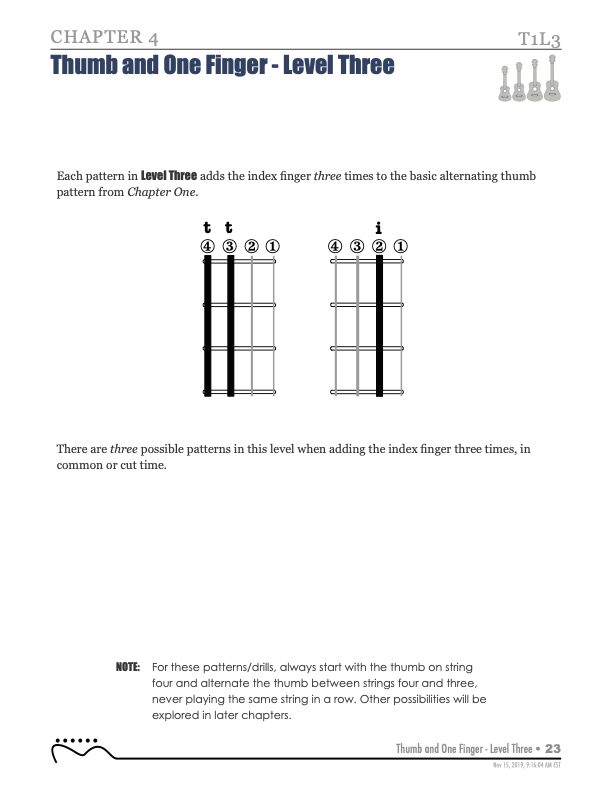
In this lesson we’re introducing the index finger three times to the alternating thumb pattern mastered in the Alternate Thumb Fingerpicking Style - Introduction. There are three possible patterns in common or cut time.
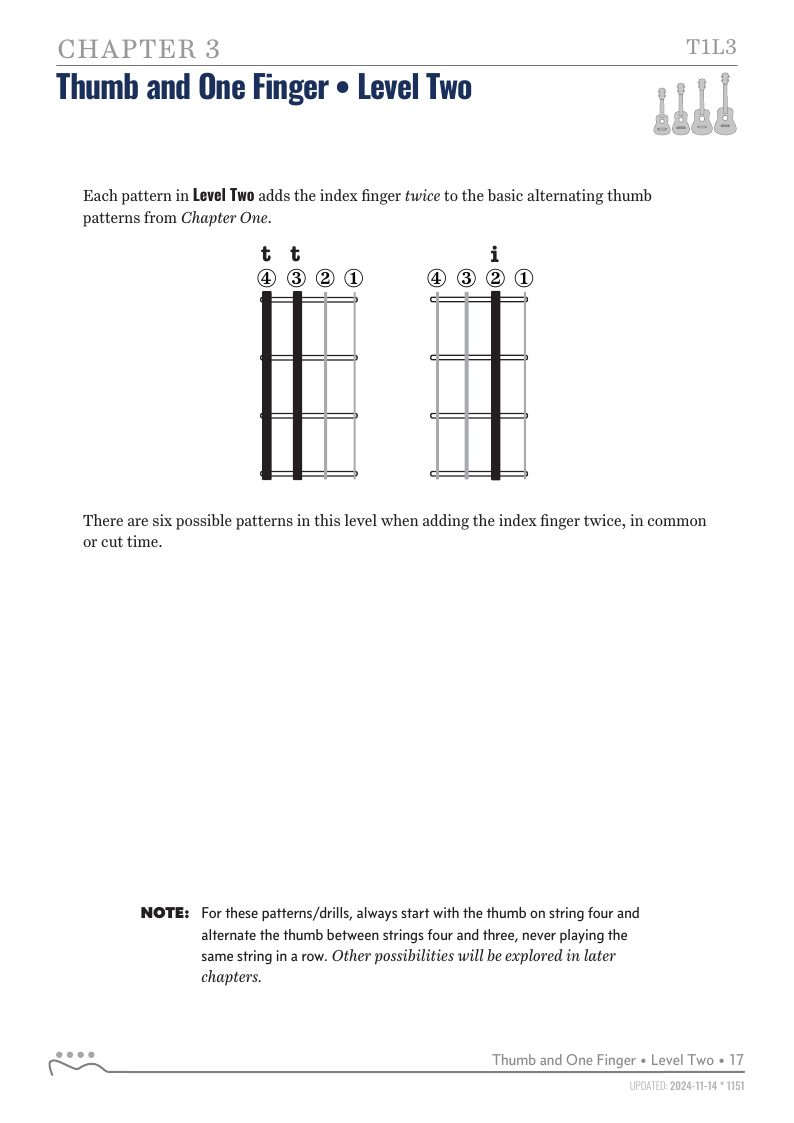
In this lesson we’re introducing the index finger twice to the alternating thumb pattern mastered in the Alternate Thumb Fingerpicking Style - Introduction. There are six possible patterns in common or cut time.ssible variations in this lesson.
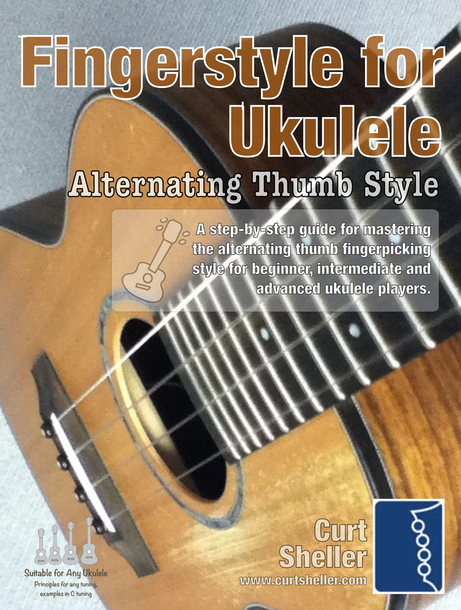
There are two common styles of fingerpicking on ukulele. This series of lessons explores the Alternating Thumb Style. A future series will explore the Thumb and three finger style, the traditional p i m a classical guitar style that we’ll adapt to ukulele.
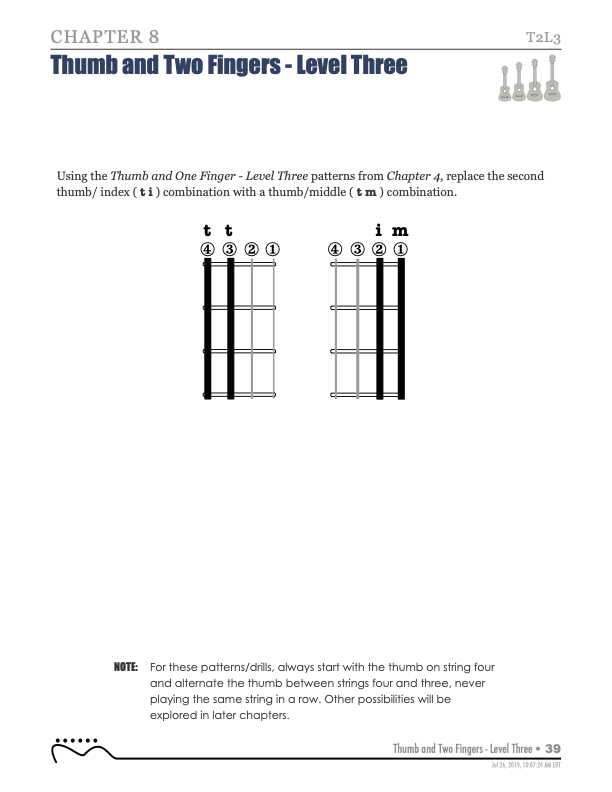
In this lesson we're introducing the middle finger to the fingerpicking patterns mastered in lesson/chapter four. There's three patterns in common or cut time.
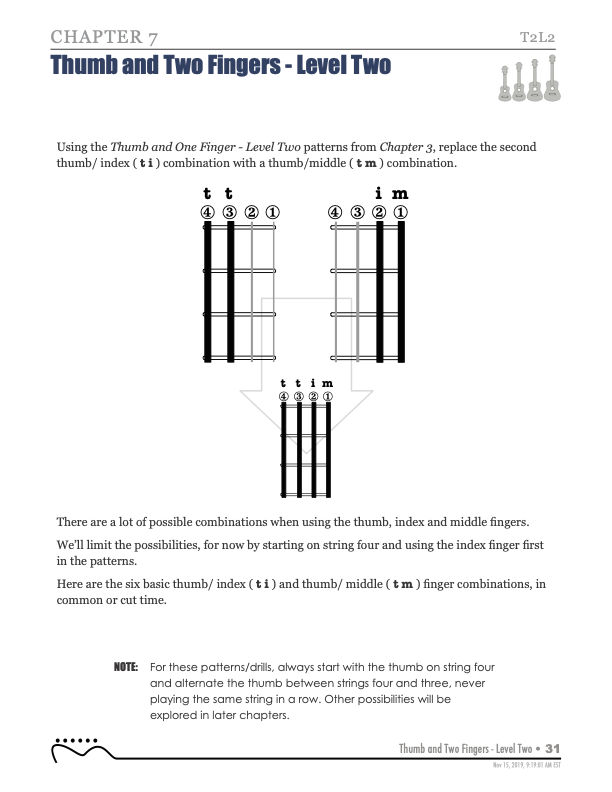
In this lesson we’re introducing the middle finger to the fingerpicking patterns mastered in chapter/lessons four. There are six possible patterns in common or cut time.
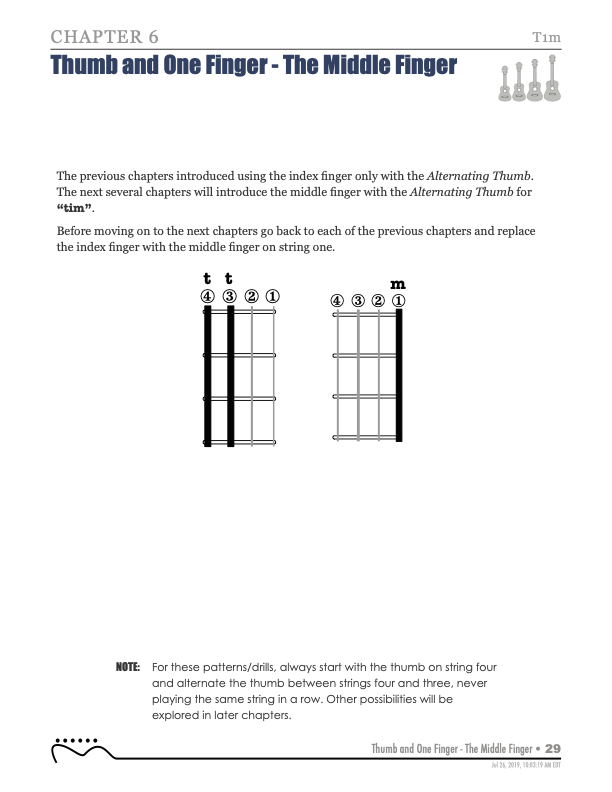
In this lesson we’re reolacing the index finger with the middle finger for the patterns mastered in chapters/lessons two, three and four.
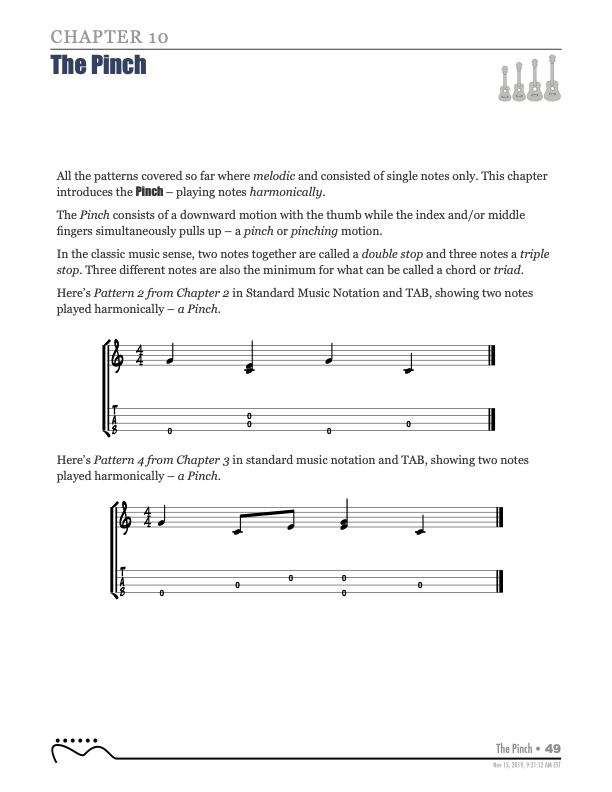
All the previous lessons in the "Fingerpicking for Ukulele, Alternating Thumb Style Series" where melodic, single notes only. This lesson introduces The *Pinch, where any one of the thumb/index finger or thumb/middle finger combinations can be played together - harmonically.
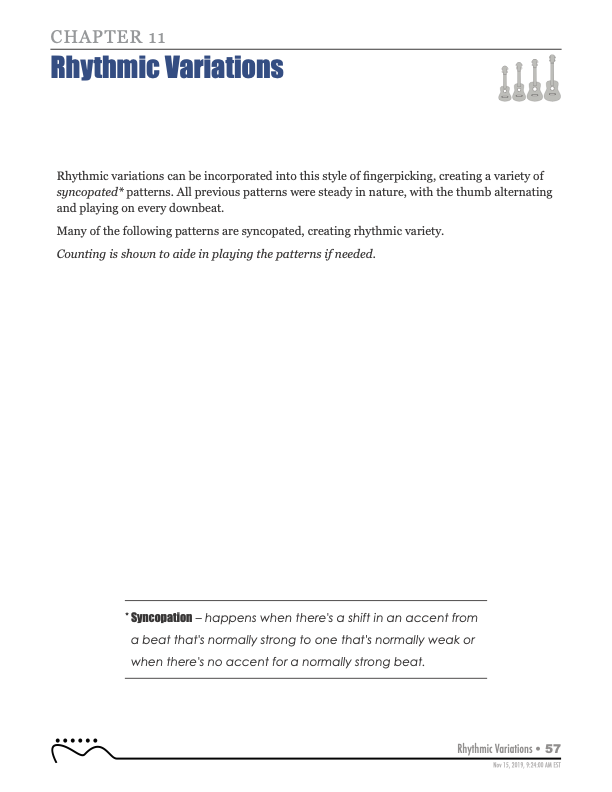
Rhythmic variations can be incorporated into this style of fingerpicking, creating a variety of syncopated patterns. All previous patterns were steady in nature, with the thumb alternating and playing on every downbeat. Many of the following patterns are syncopated, creating rhythmic variety.
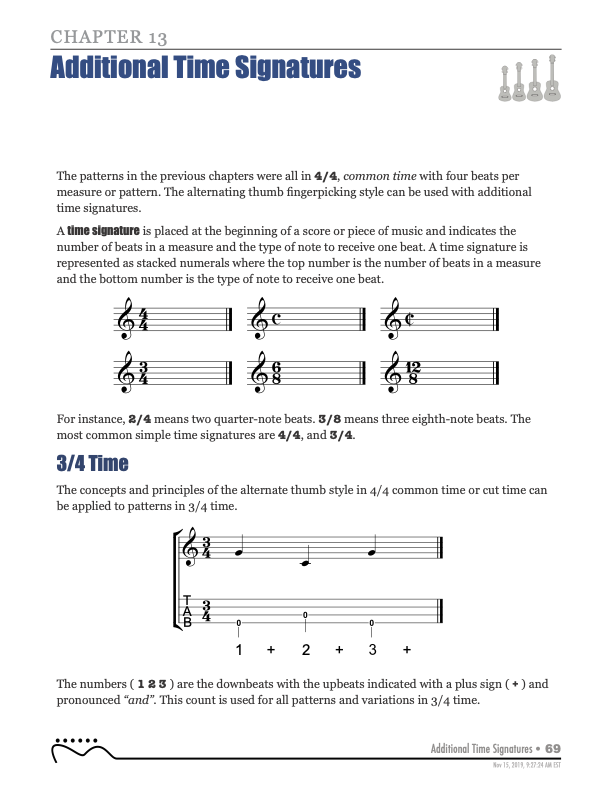
The patterns in the previous chapters were all in 4/4, common time with four beats per measure or pattern. The alternating thumb fingerpicking style can be used with additional time signatures.
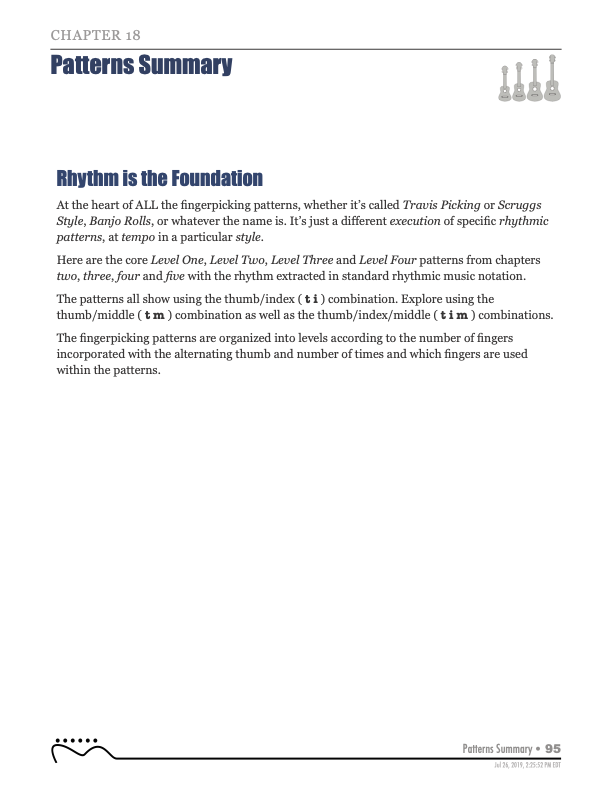
Summary of the core Alternating Thumb patterns from the Alternating Thumb Fingerpicking for Ukulele book.
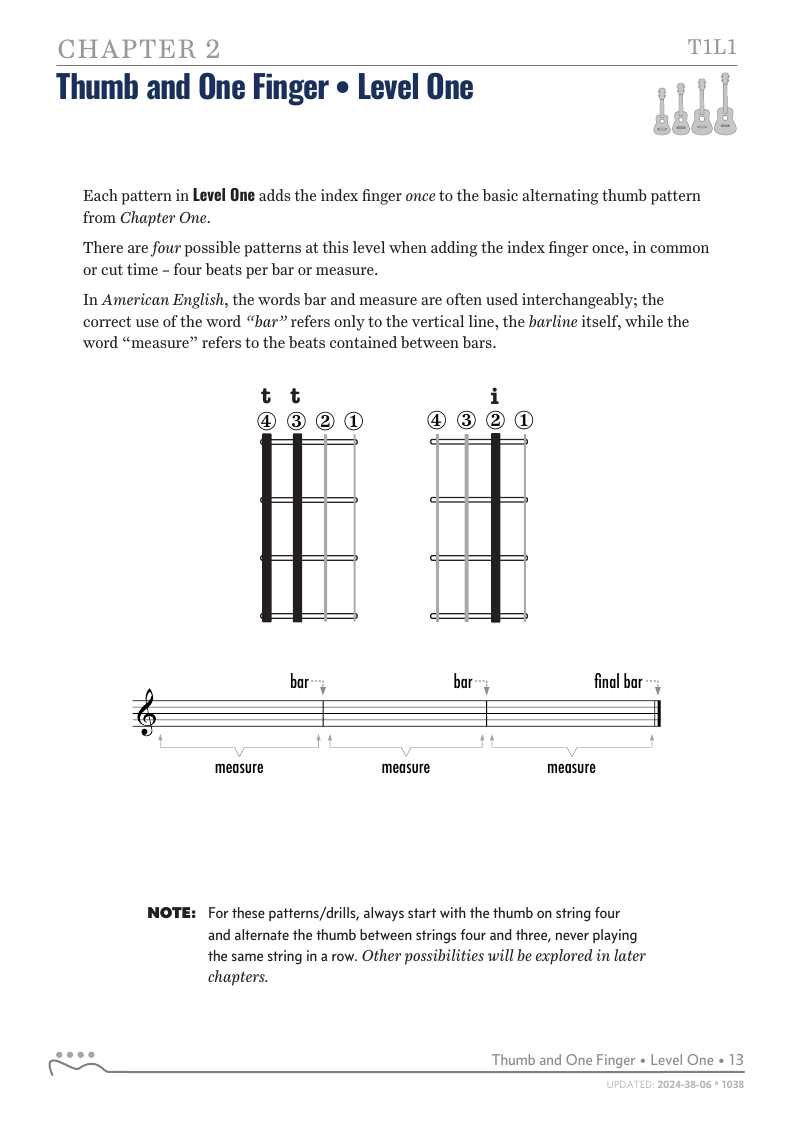
In this lesson we’re introducing the index finger once to the alternating thumb pattern mastered in the Alternate Thumb Fingerpicking Style - Introduction. There are four possible patterns when adding the index finger once in common or cut time.
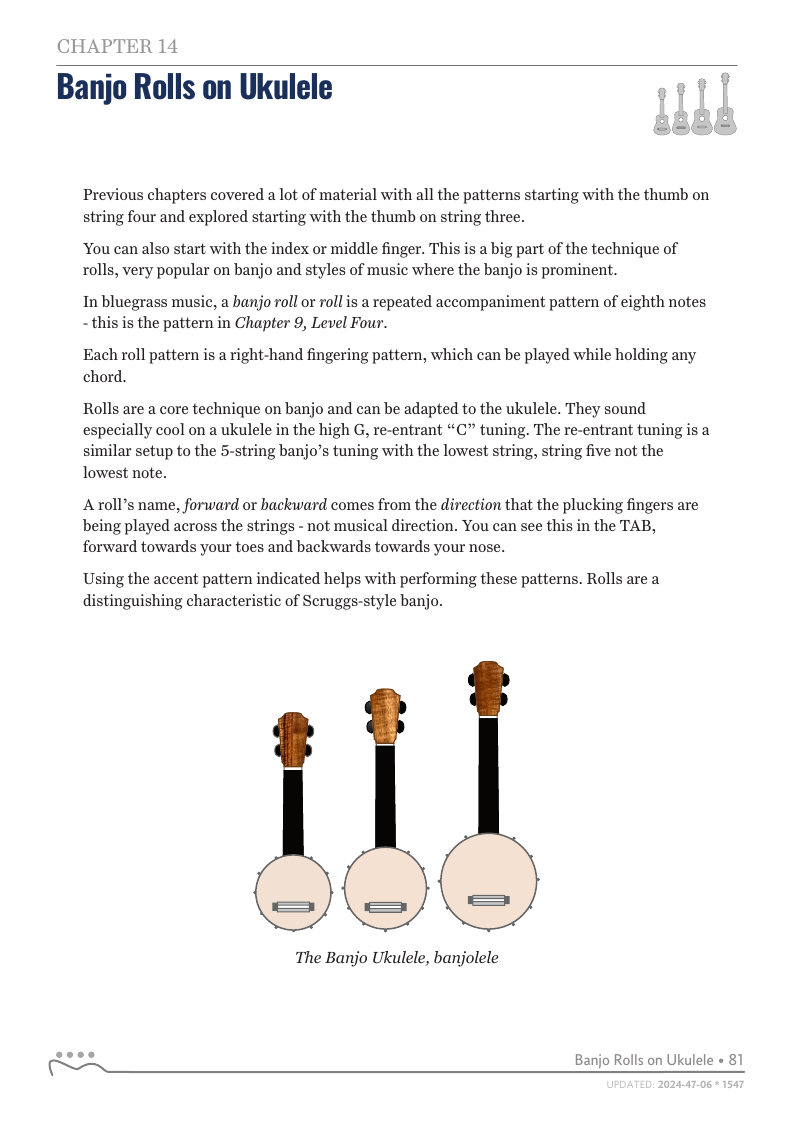
Exploring banjo rolls on ukulele. In bluegrass music, a banjo roll or roll is a repeated accompaniment pattern of eighth notes. Each roll pattern is a right hand fingering pattern, which can be played while holding any chord position.
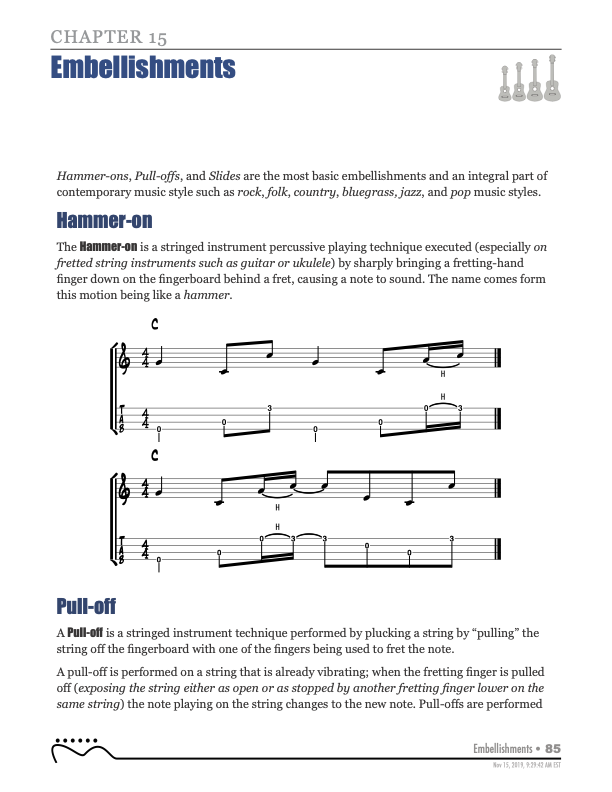
Hammer-ons, Pull-offs, and Slides are the most basic embellishments and an integral part of rock, folk, country, bluegrass, and pop music styles.

Tablature, or "TAB" for short, is a musical notation system for indicating instrument fingering rather than musical pitches in the standard music tradition. Tablature is common for fretted stringed instruments such as the lute, vihuela, or guitar. Tablature has been around for centuries and was common during the Renaissance and Baroque eras.
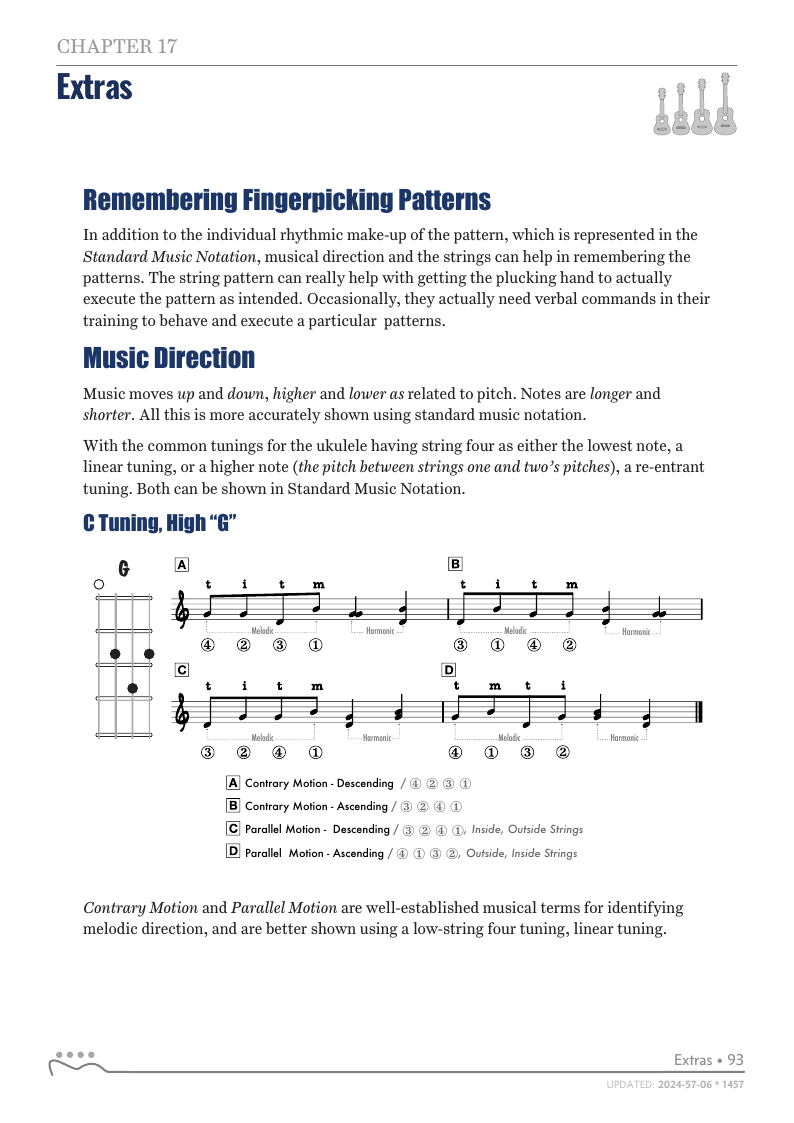
In addition to the individual rhythmic make-up of the pattern which is represented in the Standard Music Notation. Musical direction and the strings can help in remembering the patterns. The string pattern can really help with getting the plucking hand to actually execute the pattern as intended.
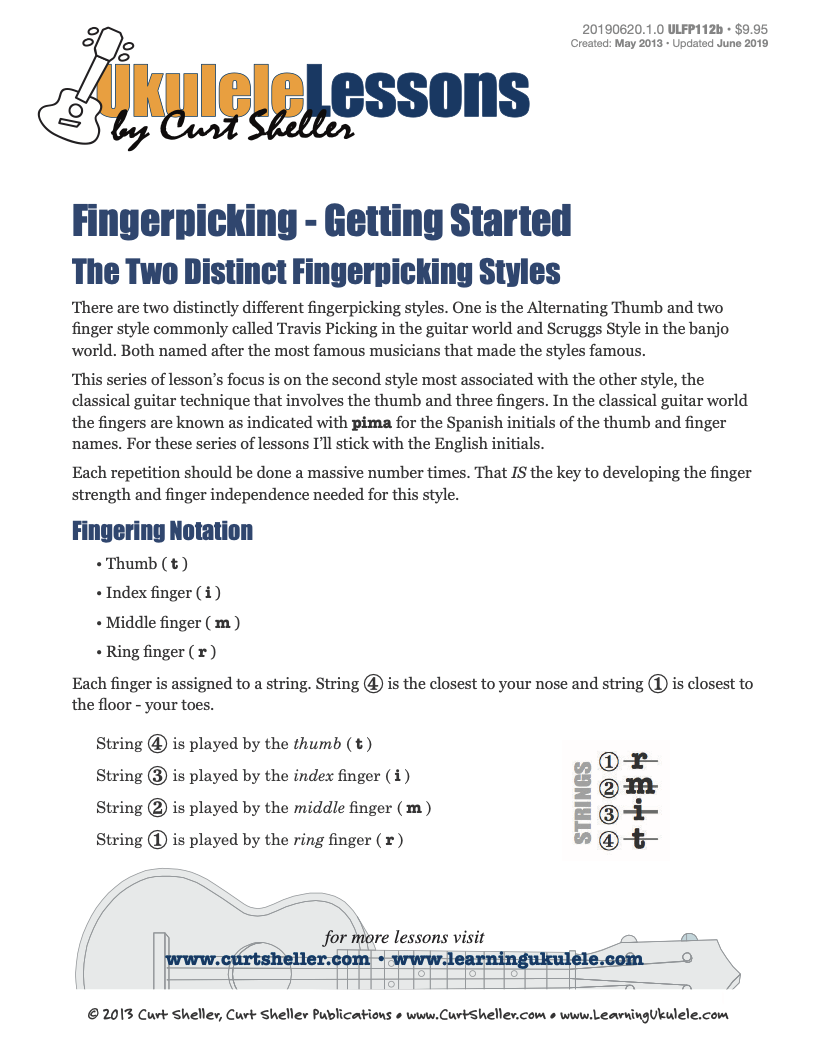
There are two distinctly different Fingerpicking Styles. The Classical (pima) and "Alternating Thumb Style" commonly called "Travis Picking" in the guitar world and "Scruggs Style" in the banjo world. The focus of this series is on the classical (pima) style.

The "Alternating Thumb Style" lessons are in their own section and book.

Additional practice material for developing and exploring the possibilities of the alternating thumb on ukulele no found in the book.




.jpg)